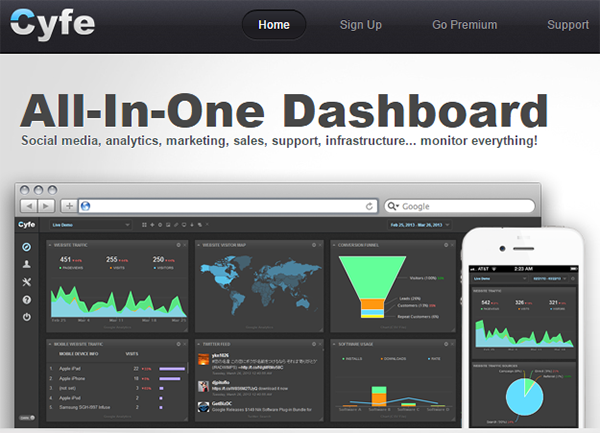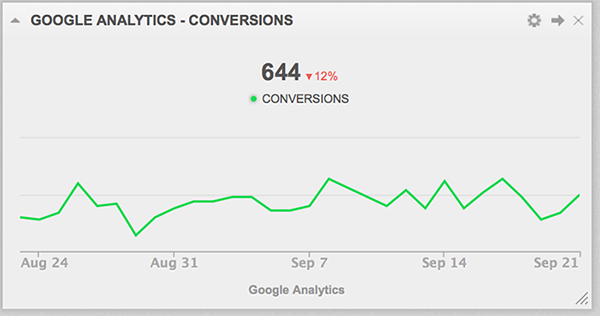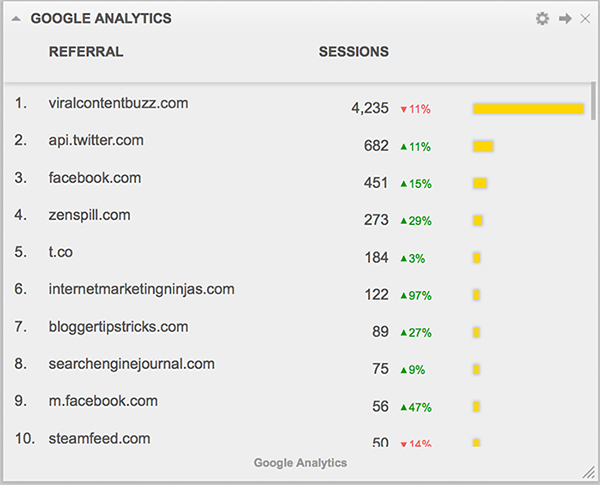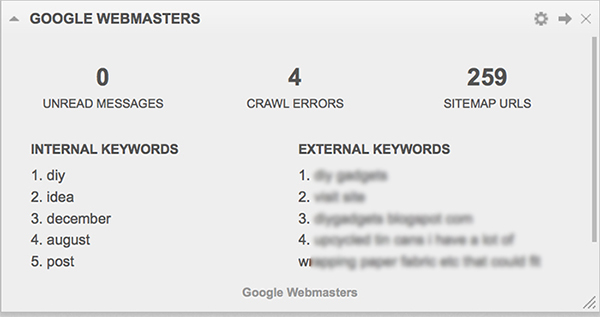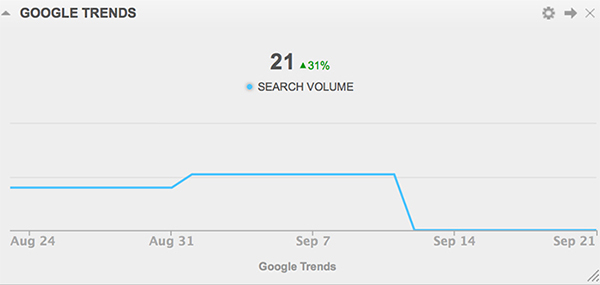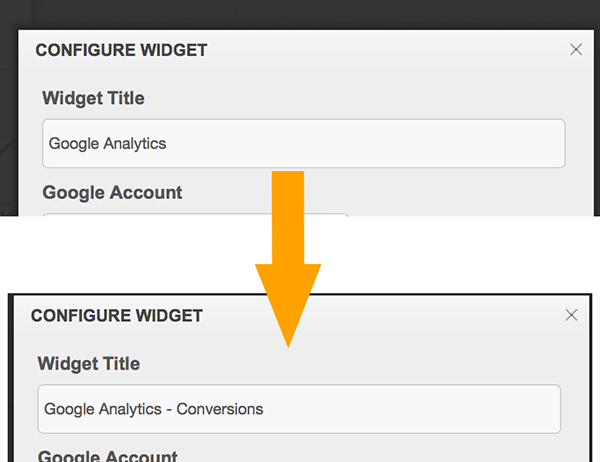How to Create an SEO Dashboard Using Cyfe
There are dashboards for pretty much everything now. Social media accounts, marketing, analytics, demographic data, even creating reports that you can show your clients to prove you are actually doing what they pay for.
But what do you do when you need something specific, like a dashboard for monitoring SEO?
It is a major focus for marketers, and yet there are no reliable dashboards made specifically for that purpose. What gives?
Luckily, you can create one using a tool that is already out there: Cyfe.
Webmaster’s Note: This is a guest entry by Ann Smarty from SEO Smarty.
What Is Cyfe?
Anyone who has dabbled in online social or analytics dashboards has probably heard of Cyfe. It boasts an all-in-one feature list that really deserves the title. The features include:
- Monitor for everything from individual accounts, to different websites.
- Push API or custom widgets that allow you to display data from your company, securely.
- Get reports in real-time, based around your specifications (traffic, social info, customers, sales, etc).
- Archive and access historical data so you can see patterns that have developed over time, and use it to inform your strategy today and in the future.
- Generate data exports so you can always keep record of your progress.
You can use these features – and their many tools – to create customized dashboards on just about anything your business could possibly need.
What is an SEO Dashboard?
When looking at search engine optimization, it can be easy to get bogged down in the technical aspects. That means we lose focus where it counts: the marketing side. SEO is not just a way to be viewed on search engines, and it is not all about algorithms and tricks.
At its heart, SEO is like any other marketing tactic; you are trying to connect with your customer. But the tricky part about SEO is that it’s extremely hard to find the correlation between the changes that you’re going to make and what that results in. The time frame between your change and when it is going to become part of algorithm is huge.
By the time you see a positive trend, you may have forgotten what you did.
An SEO dashboard aims at monitoring important SEO aspects so that they become more manageable. It is especially useful if you are working on several websites, in order not to lose track of what you do and where it brought you.
That’s where I find Cyfe especially useful: I am busy and I have many sites and Cyfe gives me the way to keep an eye on all of them and get a bird’s view of their performance.
SEO Widgets I Have Enabled
Here are a few examples of widgets I am using to build up my Cyfe dashboards (I use a separate dashboard for each of my major sites).
1. Google Analytics Widget
Google Analytics Widget > Conversions > All Sessions (Depending on the site, I may have separate widgets for traffic sources, i.e. organic and social):
Note: You can also use the Unbounce widget to monitor conversion funnels and leads.
Google Analytics (Real Time) Widget
I just love watching those numbers: Don’t judge me!
Google Analytics Widget > Referrals
I use this widget as a reputation management tool: Who has suddenly started sending me traffic?
These three widgets give me a cool overview of my analytics data and I don’t have to spend time clicking through Google Analytics reports. I need to save time.
2. Google Webmaster Widget
Google Webmaster Widget > Overview
This widget gives me a nice overview of Google’s crawl errors, keywords and new messages. It’s very important to have it handy.
3. Google Trends and Alerts Widget
As I am a huge believer in brand mentions as ranking factor, both Google Trends and Google Alerts are on my dashboard tracking my brand name
4. Notes Widget
Each of my dashboards has a separate widget for notes where I annotate all the important changes to a site or notable campaigns
Note: Don’t forget to rename EACH widget to make it clear what’s inside. By default, the widget will only have the name of the service as a name, so it is easy to get lost.
Widgets I am not using but you may like them:
- You can also enable the SERPs widget for ranking tracking but I am getting emails for that, so I don’t clutter my dashboard. They don’t change as often!
- If you are a fan of Moz numbers, you can enable a Moz widget to monitor your backlinks, external links, etc.
More Possible Options
Just going over the features listed above, you will see that there is a never ending list of ways you could go about getting this information. The dashboards are meant to be customized to follow the data that is valuable to your brand, but not to all marketers. What might be important to you might not be important to someone else, which is what makes this such a versatile tool.
As such, giving you advice on how to setup the dashboards would be pointless. You will just be changing it to fit your needs, anyway. What would be more helpful is pointing out some of the directions you can go, in order to find the specific information you need.
Option 1: Track Social Engagement and Interests
What people are searching for and talking about on social media is going to directly reflect what they look for on Google. Tracking social stats is a fantastic way to put your fingers right on the pulse of your audience, and start seeing for yourself what gets their blood pumping.
Twitter is perhaps the best platform for this, because of its open nature. I also use Google Plus search. You would be amazed by the intimate information you can get from these sources.
Once you have started to find trends, you can begin researching keywords that fit.
Option 2: Tracking Sales
What are people buying on your site? Are these sales coming from direct Google traffic, search in site, or recommended products? What do these sales all have in common?
Customized widgets and API can help you to get the answers. Connect the dashboard to your company’s sales stats, and start finding out what you put out that has the most consistent profits.
See how it seems to relate to other products. You may be able to find combined long tail keywords that are more beneficial than the simpler ones, which often have greater competition.
Option 3: Analyzing Historical Data
Your SEO strategy is going to evolve over time. Having a timeline of that period so you can see what has and has not been working is a great way to track the ebb and flow of progress. You might find that something that you did before was working a bit better then now, and incorporate that into your current keywords.
Bottom Line
Ultimately, Cyfe is useful because it is a tool you can make your very own. You will be able to customize it to fit your needs, which is the beauty of it.
